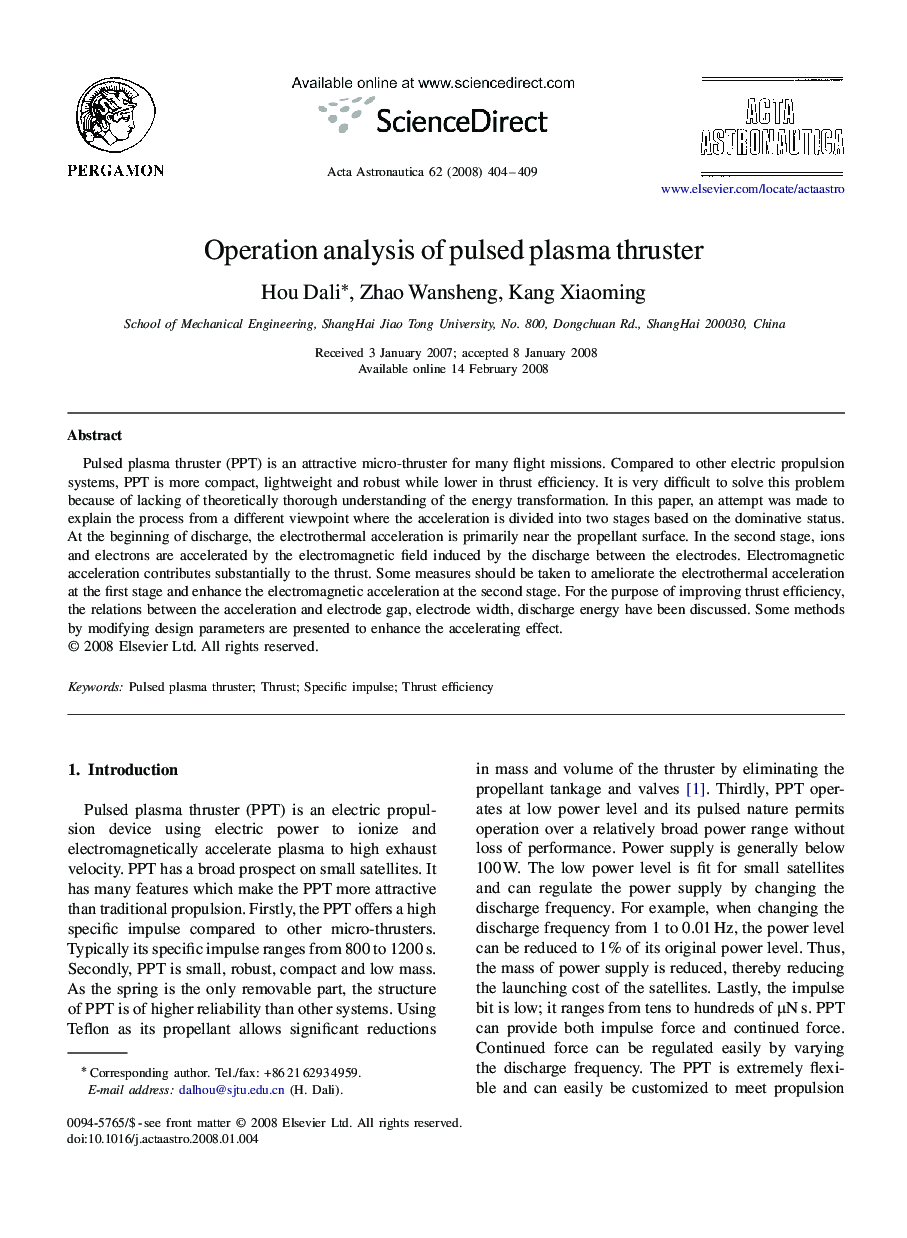| Article ID | Journal | Published Year | Pages | File Type |
|---|---|---|---|---|
| 1716928 | Acta Astronautica | 2008 | 6 Pages |
Pulsed plasma thruster (PPT) is an attractive micro-thruster for many flight missions. Compared to other electric propulsion systems, PPT is more compact, lightweight and robust while lower in thrust efficiency. It is very difficult to solve this problem because of lacking of theoretically thorough understanding of the energy transformation. In this paper, an attempt was made to explain the process from a different viewpoint where the acceleration is divided into two stages based on the dominative status. At the beginning of discharge, the electrothermal acceleration is primarily near the propellant surface. In the second stage, ions and electrons are accelerated by the electromagnetic field induced by the discharge between the electrodes. Electromagnetic acceleration contributes substantially to the thrust. Some measures should be taken to ameliorate the electrothermal acceleration at the first stage and enhance the electromagnetic acceleration at the second stage. For the purpose of improving thrust efficiency, the relations between the acceleration and electrode gap, electrode width, discharge energy have been discussed. Some methods by modifying design parameters are presented to enhance the accelerating effect.
